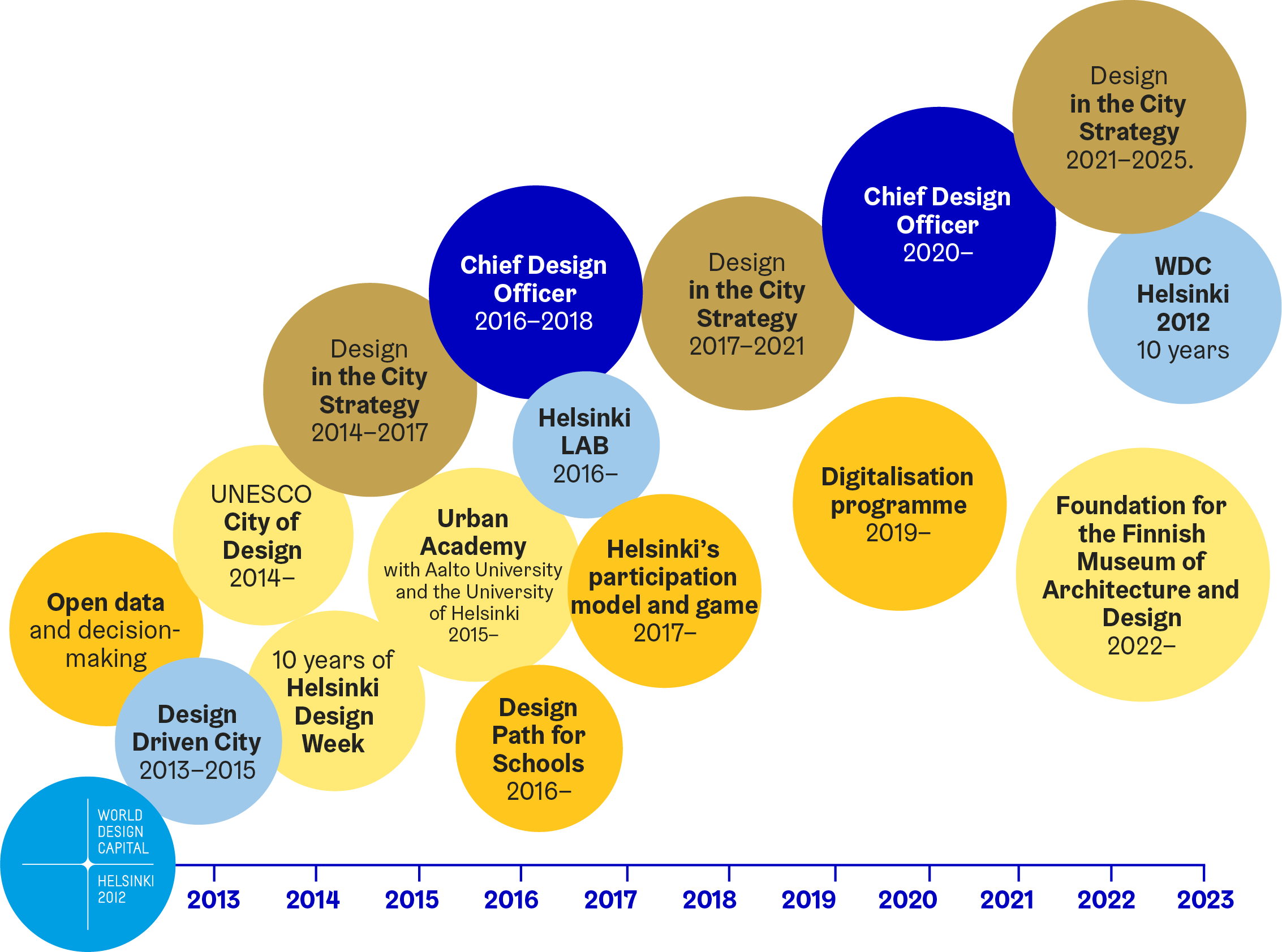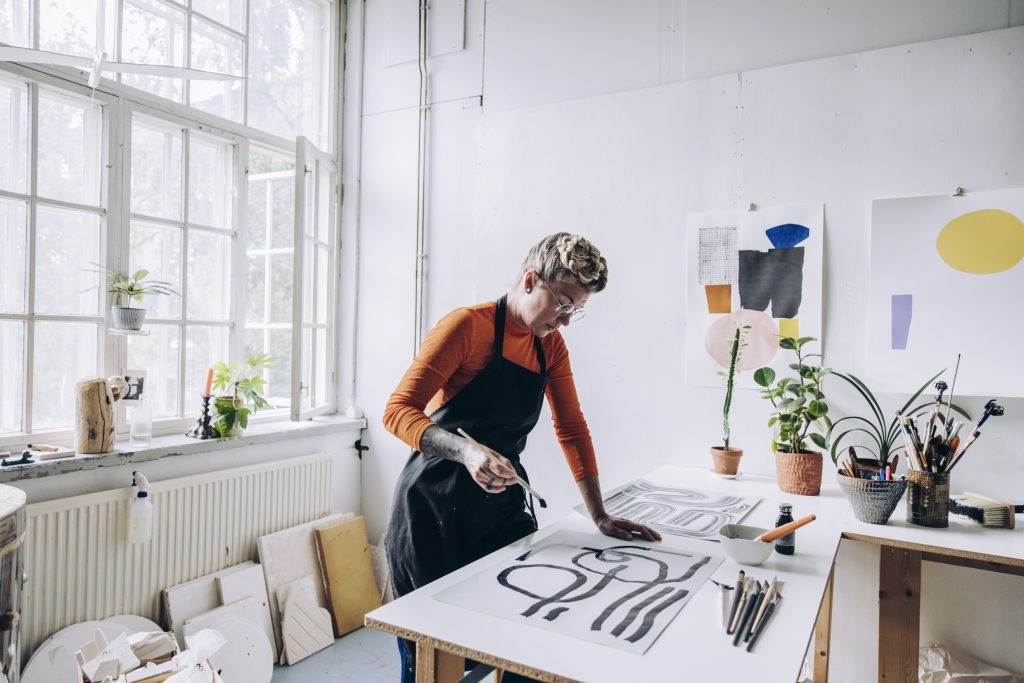

Design has been part of the Helsinki City Strategy for more than a decade. For example, Helsinki is one of the world’s first cities to appoint a Chief Design Officer. During this strategy period, design has been a more systematic part of user-oriented service renewal and the development of urban space.
Helsinki is known for great design. Design is a way for Helsinki to build a functional and equal city. Design is a tool for understanding the needs of residents and solving relevant problems. Design and architecture have long played an important role in the building of the Finnish welfare society and better daily life at both the national level and in Helsinki.
The City of Helsinki’s design journey began in 2012, when Helsinki was selected as the World Design Capital together with the cities of Espoo, Vantaa, Kauniainen and Lahti. For the City of Helsinki, that year was a starting point for utilising design in the development of the City’s services and operations. As a result, design became a strategic-level focus area for the City. During its design journey of more than ten years, Helsinki has consistently strengthened the role of design as part of the City’s core activities. One of the key factors behind the success of this design journey has been the strong role of design in the City Strategy.
Helsinki is one of the world’s first cities to appoint a Chief Design Officer. In 2020, the City appointed its second Chief Design Officer to promote the use of design and architecture in the development of the city and strengthen Helsinki’s reputation as an internationally renowned design city.
The Chief Design Officer is supported by the City’s internal design team and the City’s internal design network of more than 300 experts. From 2024 onwards, the internal design team will work as part of the strategic development within the City Strategy Unit, becoming even more closely involved in the assessment of the City Strategy, the preparation of the strategy knowledge base and the implementation of the strategy by supporting the City’s key projects and processes, among other measures.
Helsinki implements design projects in close cooperation with design agencies. Helsinki has a framework agreement on service design, which covered a total of 5 million euros in design procurements in 2023. Design procurements in Helsinki have increased more than tenfold in the last eight years.
During the strategy period 2021–2025, design has been a more systematic part of user-oriented service renewal and the improvement of the City organisation’s productivity. The goal is to increase the attractiveness of public urban spaces by means of insightful design and experimentation. New initiatives in this area include the placemaking programme focusing on the co-creation of pleasant urban spaces and the completion of the Helsinki architectural programme. Design is an important factor in setting Helsinki apart internationally, and this objective is supported through networking and by promoting the realisation of the new museum of architecture and design. An important challenge for the future is to develop the assessment of the effectiveness of design activities and the utilisation of data generated in design work.
Helsinki’s journey as a design city

Successes:
- Co-creation of urban spaces: the launch of placemaking activities.
- Completion of Helsinki’s first themed playground.
- Completion of Helsinki’s architectural programme.
- Service design of the Hel.fi website.
Areas for development:
- Design of public urban spaces.
- Strategic design: systems, phenomena and anticipation.
- Development of the effectiveness and effectiveness indicators of design activities.
Studies and websites:
Design Helsinki website
UNESCO Creative Cities Network Helsinki UNESCO – City of Design Report 2019–2022 PDF

